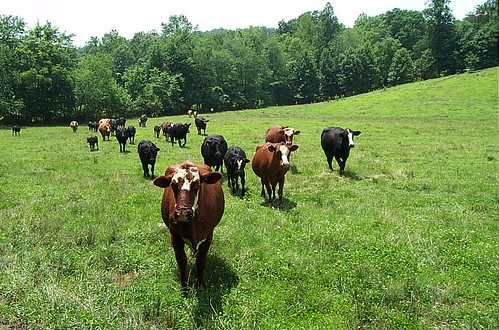
10 Everyday Things That Produce Emissions
Every day you hear something about harmful emissions and the environment. However, what does that really mean to you and me? Does it mean we need to go “cold turkey” on emission-producing products? To be honest, probably not…considering that would be pretty hard to do.
Let’s take a look though at 10 different everyday things that produce emissions.
Electricity
Unless you’ve got solar, wind or some other form of alternative energy you use to power your home/business, then you are probably relying on your local utility. Most local utilities still use fuel-burning plants to produce their electricity.
The burning of those fuels is still one of the main contributing sources of CO2 emissions in the United States.
According to a study done back in 2004, the average person living in the Midwest was 20 times more likely to die from particle matter emissions from power plants than someone living in San Francisco. Over the last 6 years, I wonder how much those numbers have changed…if at all.
[my_ad_code]
Vehicles

But, if you have a hybrid or electric vehicle, you are most likely someone who has decided to cut down on the harmful emissions caused by driving a gasoline or diesel-powered vehicles. For everyone else, if you want to cut down on those emissions you should drive less, use a proven fuel additive or check out other sources of transportation.
Other Forms of General Transportation
Yes, other forms of transportation such as buses, trains, planes, etc also produce emissions.
The volume of emissions of course depends on the transportation being used. But if you opt for the bus or train rather than driving your car to work, you are pretty much guaranteed to lower your transportation emissions.
Shipping Industry

Trucking Industry
The U.S. trucking industry alone is estimated to be more than 15 million trucks strong. One of the most heavily traveled areas for truckers in Southern California is the Ports of Los Angeles and Long Beach. The pollution, which you can often see blanketing the horizon, is due in part to the trucking/shipping industry.

The Port of Los Angeles recently reported: “In its first year, the program reduced the rate of port truck emissions by an estimated 70 percent.”
Manufacturing
Aside from the plants which are there to produce electricity and energy, there are many plants used solely for manufacturing. Manufacturers of products such as steel, iron, cement, chemicals, etc. produce a large volume of emissions during the chemical process involved in making their product.

For those of you who are interested in a more in-depth report on not just manufacturing emissions, but trends in all greenhouse gas emissions, check out this 2010 draft report from the EPA.
Wood Burning Stoves/Home Heating Oil

Now there is nothing quite like a wood-burning stove and during an especially cold winter, home heating oil is sometimes the only feasible option. But you might want to look into how to reduce your emissions and lower your home heating oil costs.
Animals

One study went so far as to say “a medium-size dog leaves a larger ecological footprint than an SUV“.
And did you know a single cow can produce up to 1000 litres of toxic gas each day?
But one positive note is that reports state you can lower those emissions by changing the animal’s diet. Don’t you think the same should hold true for humans as well?
[my_ad_code]
Gardening/Farming Equipment Powered by Gasoline/Diesel

Take this tractor for instance, it produces emissions every time it gets fired up. One cool note though, is that this tractor is hauling a manure spreader. So at least it’s taking the animal waste and putting it to good use. That doesn’t mean one necessarily cancels out the other, but it’s definitely a plus.
Basically, no matter where you live or where you go, there is some form of emission being produced. However that doesn’t necessarily mean you need to panic or try to immediately stop using anything that generates emissions, because that would be fruitless.
However, it is good to know what produces emissions, so you can be more aware of them and adjust your habits and uses accordingly. What everyday things do you use that produce emissions? And do you feel you need to lower your emissions? Why?
5 Comments
-
-
solargroupies
Reducing emissions any significant amount will take a huge shift in how we do everything.
-
Stephanie
Love these kinds of posts! I had no idea about the dog/SUV emissions stats. Of course, I am aware of cows and their methane, but wow. Just changing your pet’s diet can have a pretty big impact. Sign me up…..
-
CJ
Great post, and although the facts in the post are accurate the ELEPHANT IN THE ROOM remains unnoticed. More CO2 is good for forests, plants and vegetation. There is NO conclusive proof that CO2 causes global warming. In FACT, CO2 levels were at time 12 times higher than what they are today…340ppm today…that would be about 4000ppm. Submarine alarms activate when CO2 levels reach 10,000ppm…there is a risk of occupants getting drowsy at those levels…..
We can all agree pollution is bad and unsustainable, but to make CO2 a proxy for serious pollution is a JOKE. Carbon trading is a £100bn industry and caps CO2 but ignores more serious and infinitely more harmful emissions….
The Arctic are melting…..that’s true but the Antarctic are freezing over. Go compare their sizes…Antarctica contains 90% of the Earths ICE…..when are politicians and moneyed interests going to stop telling selective truths in an attempt at scaremongering?? Regulation and trading creates commissions and an increased financial system…more government jobs and committees…more control, power and money…..
Lets develop green tech and create a more sustainable way of life, but lets not resort to scaremongering and mass manipulation to reach those goals.
Just a thought….


nan
Nice post! We buy things and never think about the cost of them getting to us.